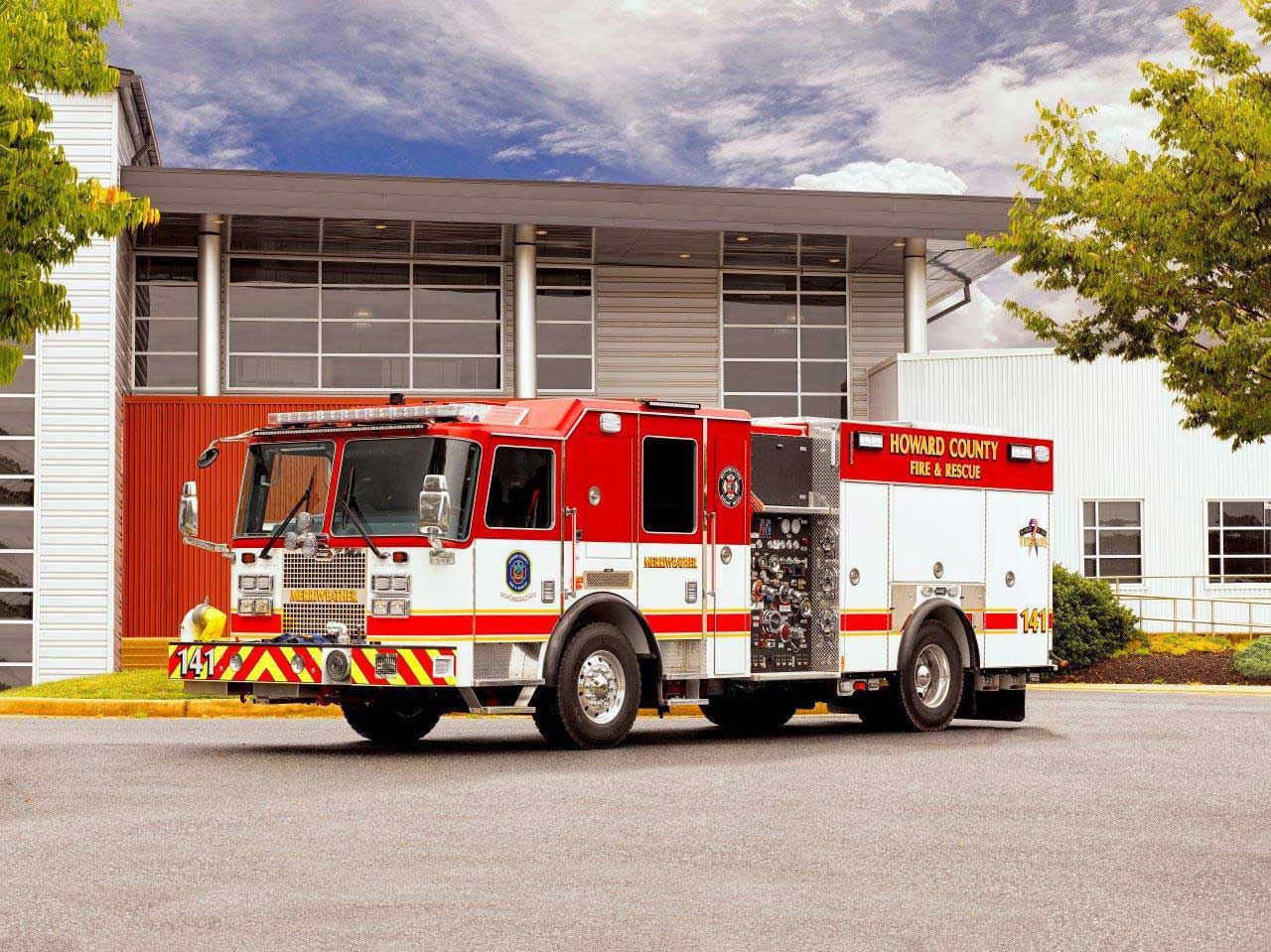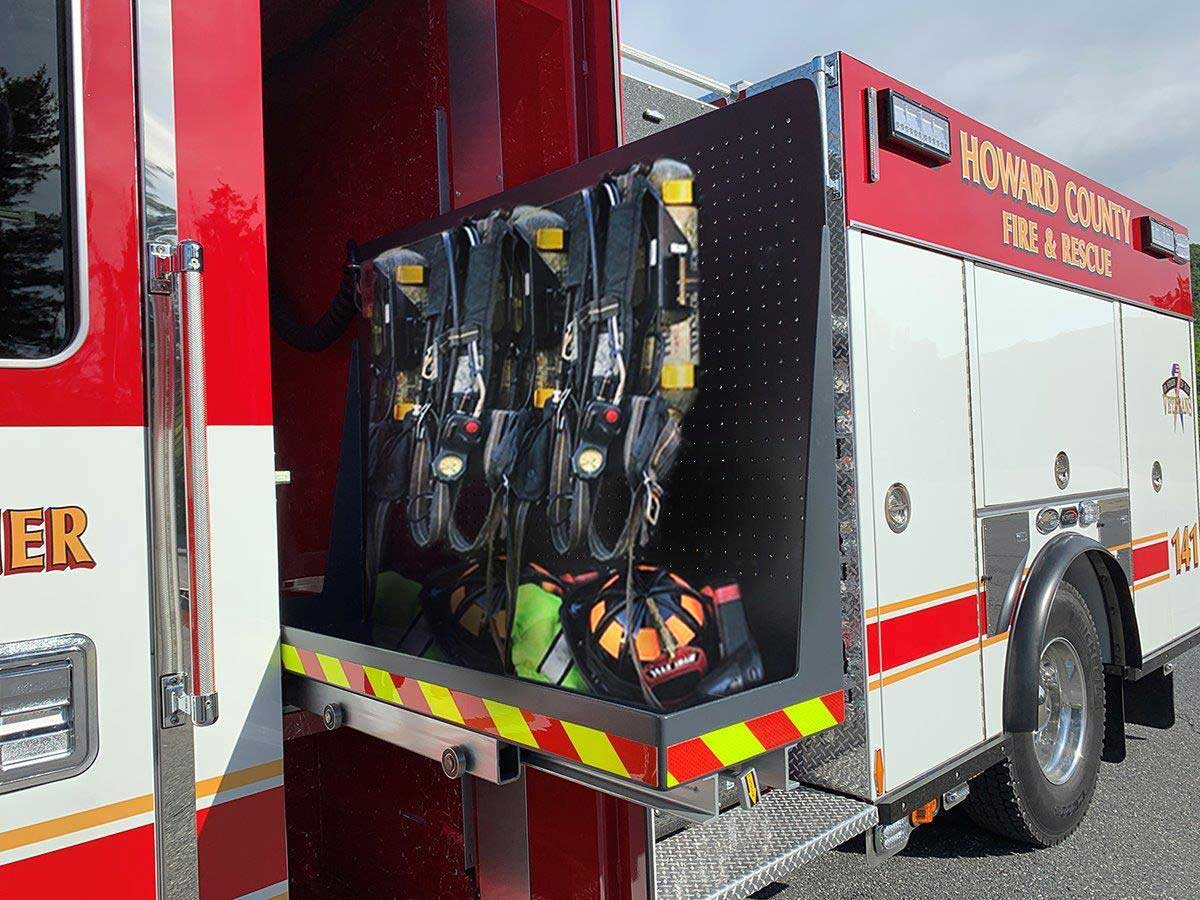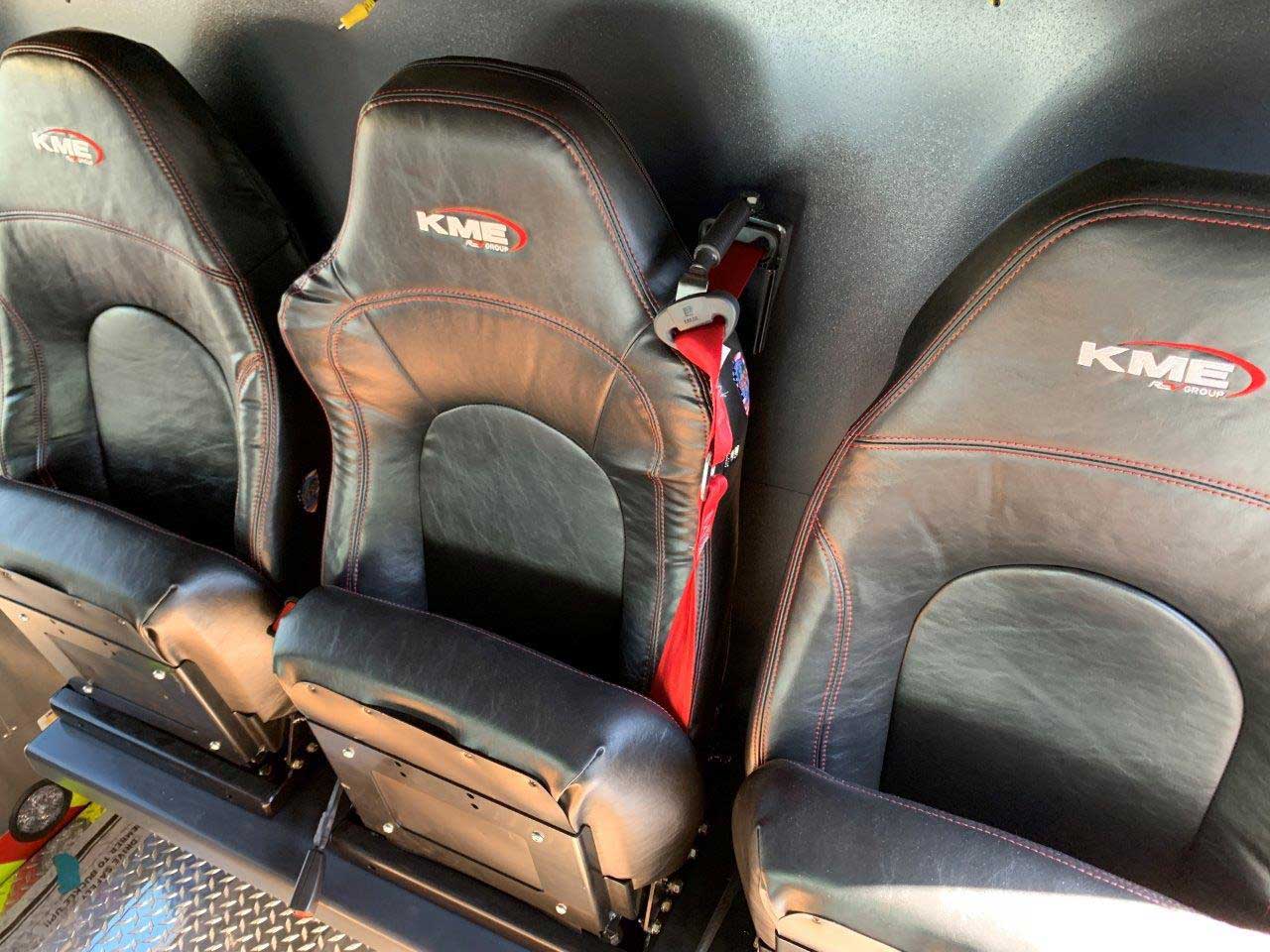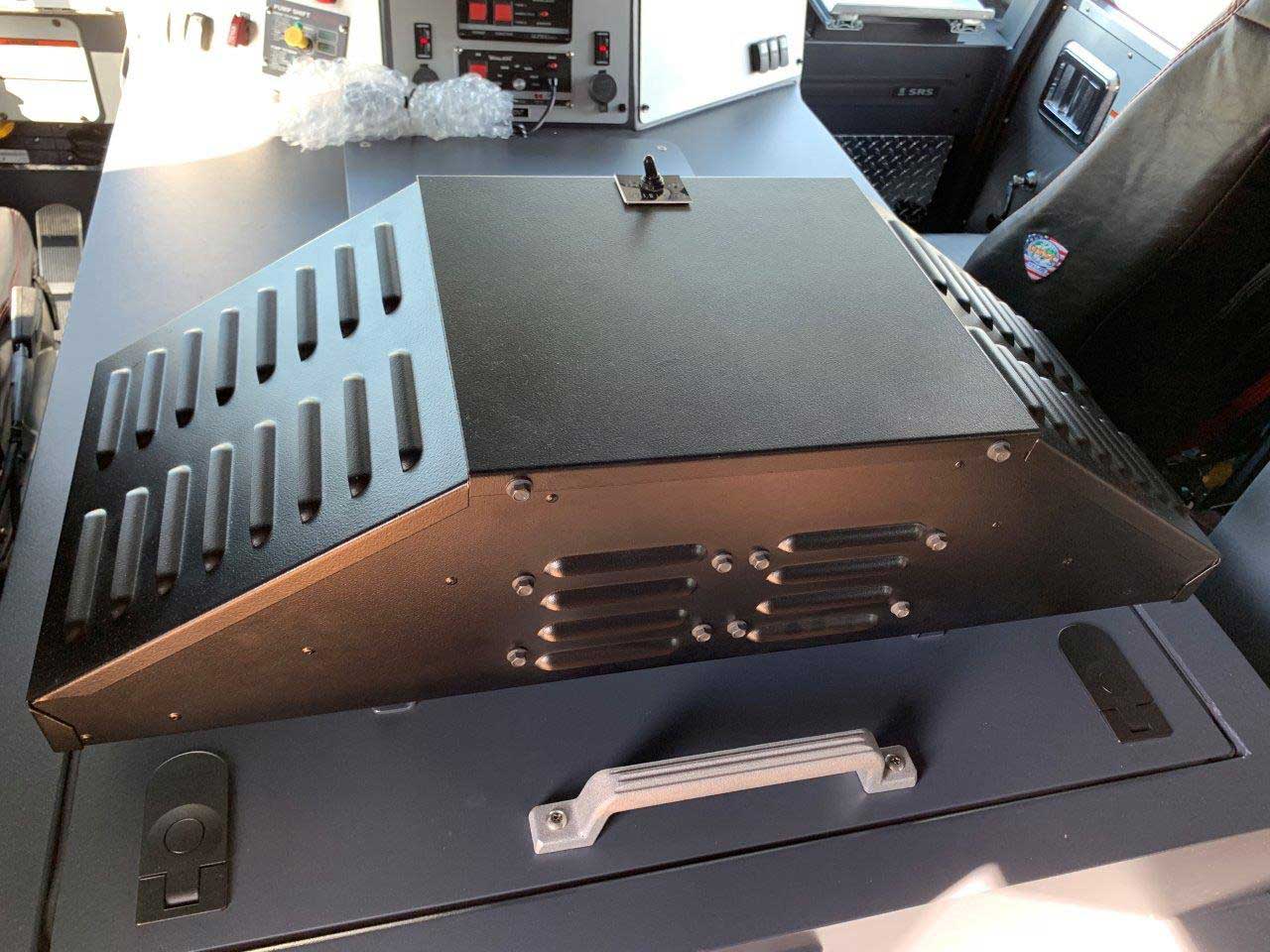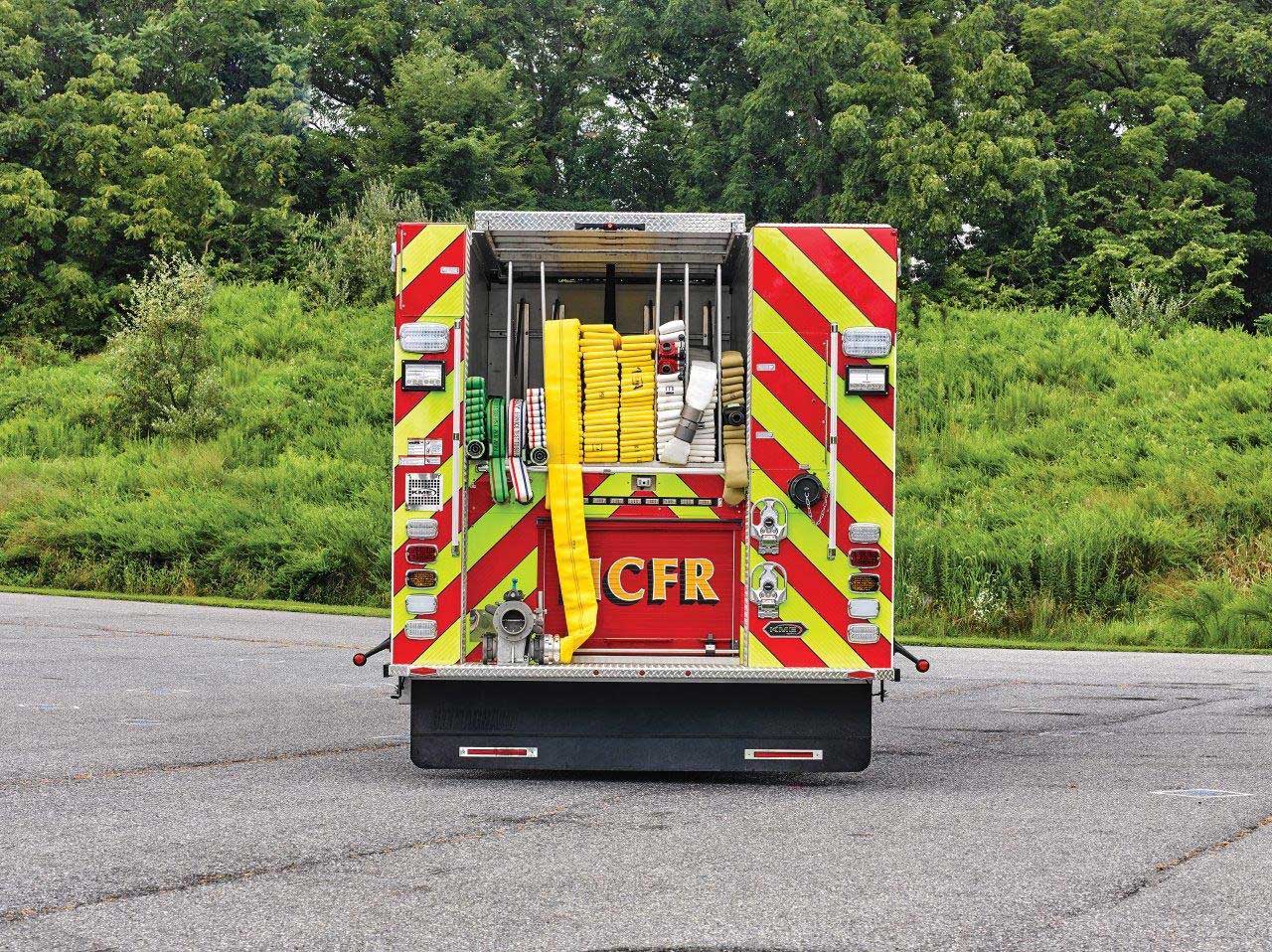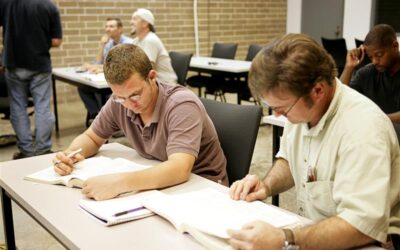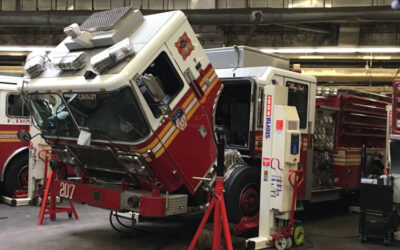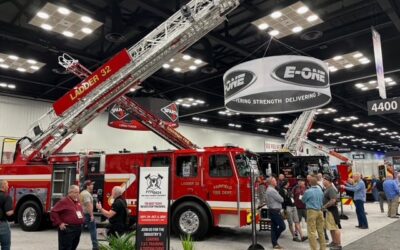The concept of firefighter cancer prevention has been the main topic these days around the fire service. The fire apparatus industry is taking a proactive stance when it comes to firefighter cancer prevention by designing new apparatus that makes it easier for firefighters to decontaminate after a fire.
Not only does it make sense for firefighters to clean their gear after a fire but also to keep their apparatus clean as well. In the long run it may certainly be harmful to themselves while returning to the fire station after an alarm if the apparatus is contaminated with carcinogenic exposed gear, SCBA, and tools.
Gone are the days of looking salty, having dirty gear and dirty apparatus. One of the most obvious areas of concern is that some departments have kept their gear and SCBA inside the cab. This is due to the old mantra of being ready to fight fire when they get off the rig, basically saying we have always done it this way in the past. However we are seeing more progressive departments stowing their gear and SCBA in compartments outside the cab.
The Howard County (MD) Department of Fire and Rescue (HCFR) is one department taking a proactive stance. Captain Michael Stout, of the department’s logistics division, states that, “Howard County Fire and Rescue under new Chief Christine Uhlhorn has the department taking a proactive stance in a carcinogen reduction program for all HCFR employees,” he says. “What we have done to start the program as far as new apparatus purchases is concerned is that we purchased four new clean cab engines. We diversified and ordered them from KME, E-ONE, Seagrave, and Spartan. All have similar configurations. By doing this, we will be able to determine what is best for our firefighters and department for future apparatus purchases.”
According to Stout, all of the vehicles have new compartmentation to store SCBA and turnout gears as well as an all stainless steel, a change from aluminum, lower hosebeds with an aluminum hosebed cover, and all painted aluminum floors inside the cab that makes it easier to clean. “We also had the SCBA seats taken out and replaced them with black cordura Valor Seats made of vinyl,” Stout says. “Removed were the old type fabric seats. The vinyl seats are easier to keep clean.”
Also all compartmentation was removed from the cab interior that obstructed firefighter vision as well. The SCBAs are now placed in a slide-out transverse compartment as well as turnout gear. There is also a HEPA filter inside the cab.
All of the vehicles have rescue-style bodies, and have 500-gallon tanks and 30-gallon Class A foam Tanks. Stout adds that there is a small hose that can be used to wash down our firefighters after coming out of a fire building also attached to the vehicle.
Hoseloads
The rigs carry 1,000’ of 4”LDH, 500’ of 3”, two 300’ lengths of preconnected 1¾”, two 200’ lengths of 1¾” crosslays, 200’ of 1¾” trash lines, and 200’of 2½” hose broken down into 50’ sections for standpipe operations. “Also carried are the normal engine company fittings and tools and basic forcible entry tools,” Stout adds.
The Howard County Fire and Rescue Department is one of a growing number of fire departments that is taking the safety and health of their members seriously. The prevention of cancer is a growing issue around the fire service in United States. Status quo is not something that we should be following by any means. Being proactive is the way to go concerning the design of fire apparatus not only presently but for the foreseeable future. HCFR is one of the fire departments in the country that has taken the lead.
BOB VACCARO has more than 40 years of fire service experience. He is a former chief of the Deer Park (NY) Fire Department. Vaccaro has also worked for the Insurance Services Office, the New York Fire Patrol, and several major commercial insurance companies as a senior loss-control consultant. He is a life member of the IAFC.
Howard County KME Specs
CHASSIS
- 100″ Severe Service Cab XLFD with 10″ Raised Roof Cab
- Clean Concept Pumper
- AXIS Vehicle Monitoring System
- Roll Tek Safety System
- Front and Side Airbag Protection
- USSC Vinyl Seating
- Drive Train
- Cummins L9 450-hp engine
- Allison 3000 EVS transmission
- Parabolic sront suspension
- Meritor 20,000-pound axle
PUMP AND TANK
- 500-Gallon Water Tank
- 30-Gallon Foam Tank
- Hale Qmax 1,500-gpm single-station pump
- FoamPro 2001 Foam System
BODY
- 143″ pumper body constructed of 12GA 304″ Stainless Steel
- Lock-N-Load™ hosebed cover
- Side tank ladder dtorage
- Full-height/split-depth compartments on DS and OS
- Fender Storage Compartments
- OS Body Roof Compartments
ELECTRICAL
- Class 1 ES-Key multiplex system
- Class 1 rear vision camera
- Hi-Viz 72″ brow light
- Whelen emergency lighting package
DIMENSIONS
- Overall Height: 112″ (9′-4″)
- Overall Length: 433″ (31′-6″)
- Wheelbase: 191″
Howard County Fire Rescue
Howard County Fire Rescue covers 253 square miles with a population of 320,000 residents that more than doubles during the daytime work hours. There are a total of 13 stations under the umbrella of the department, five of which are fully county staffed. The remaining seven are career/volunteer combination stations. There are a total of 900 career and volunteer firefighters.The fleet includes:
- 25 Engines
- 3 Trucks
- 4 Platforms
- 4 Squads
- 19 Ambulances BLS and ALS


